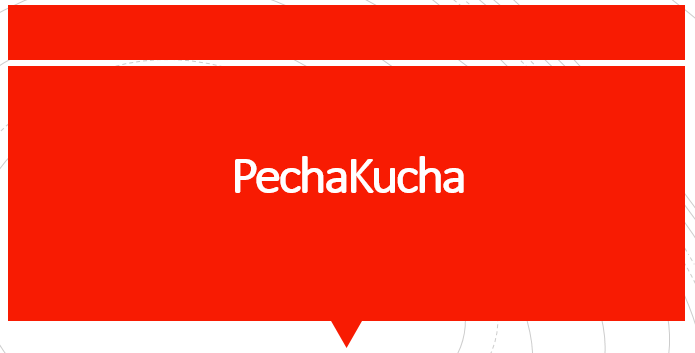Using the Japanese PechaKucha Style for Presentations
Last updated on October 25th, 2024
While there are more and more presentation tools that have sprouted up, with PowerPoint in the lead with its new features and capabilities, the problem still remains.
Many people still commit the biggest presentation sins of putting too much information and too many elements in every slide, and using up too many slides.
The result remains the same: dull and time-consuming presentations that give slideshows a bad name. However, that doesn’t mean all hope is lost. A new presentation technique is taking over the world of presentations and has got speakers and educators excited. And we’re talking about the Japanese-inspired presentation technique called PechaKucha.
PechaKucha, which means “chit chat” in Japanese, was created in 2003 by Astrid Klein and Mark Dytham, two Tokyo-based architects. They have created it to deliver a simple message: the more valuable your presentation becomes when you say less.
The idea behind PechaKucha works on a simple rule known as “20 x 20”. This means that an ideal presentation should have 20 slides that are to be shown for only 20 seconds each. Pecha Kucha format makes your presentation concise and yet more powerful.
Ever since it was unveiled, millions all over the world have used it, across various industries and by various kinds of presenters. From board rooms to classrooms, the PechaKucha style for presentations is widely accepted and used to make presentations not just shorter, but most importantly, more effective.

Why Pecha Kucha Format Works
Because of the 20×20 format that Pecha Kucha format enforces on presentations, it forces you to change the way you present. It even turns around how you talk and think, so that you as a presenter will change how your own slideshow will flow.
With PechaKucha, you make your presentations concise by taking a look at each of your slides. You are forced to follow the 20×20 rule and therefore must remove any unnecessary items or elements that don’t help your presentation. It forces you to also become more creative in your presentation on each slide, since you don’t have a lot to work with and yet have to get your message across.
Still confused? Let’s break down PechaKucha even further with these five rules.

5 Rules of PechaKucha
Make each slide count. You only have 20 slides to work on, regardless of your topic. So for every slide, ask yourself, “What will the audience learn from this single slide?”
Make the most of 20 seconds for each slide. You don’t have to speak so much to get your point across. Oftentimes, this is what makes the presentations drag on unnecessarily. However, when you’re now more aware of the timeframe you’re supposed to give each slide, you learn to make full use of it.
Make it visual. Choose words with high imagery value. Avoid corporate jargons and instead, make sure that your audience will easily understand what you’re talking about.
Avoid complex diagrams and text-heavy bullets. Keep text to a minimum and your text and visuals should complement each other instead of simply being redundant.
It takes practice. Remember, it always helps to practice before you go out in front of an audience, and the same can still be said with PechaKucha. The more you apply these rules, the better you’ll become.
